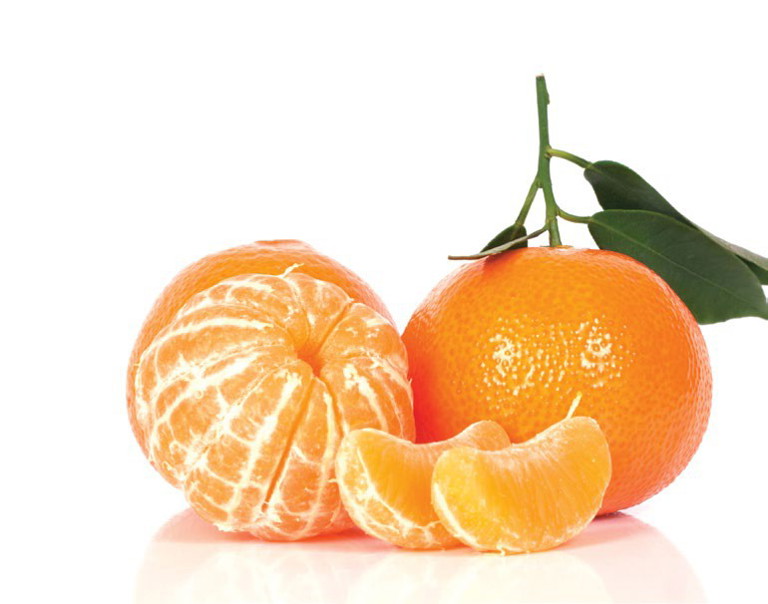On the
juice

IF you are going to pick
early, be selective and check
pickers are picking from
the right block and from the
right position on trees.

BY ELBE COETSEE
INDUSTRY DEVELOPMENT
OFFICER, DPIRD
Great news for West Australia growers and consumers: the goal of a 95% pass rate for zingy, juicy WA mandarins is in sight.
Last year the mandarin pass rate for internal quality increased to 93% (from 87% in the year prior). Meanwhile, oranges stayed above the 95% pass rate goal for the sixth year in a row.
These results put WA-grown citrus closer to the industry goal set in 2021: to have 95% of all WA citrus pass the internal maturity standards from testing in the market. To achieve this goal, there are a couple things growers can do, which we’ll discuss further down.
As part of the industry program, fruit is randomly selected from wholesale floors and retail outlets throughout the season. It is then measured against the WA and Australian Citrus Quality standard for juice content and BrimA. What’s BrimA? It’s a measurement of the sugar and acid ratio. Or, in other words, the ‘zing’!
“ It was a good year for Imperials, scoring a 100% pass rate, while Clementines had a 90% pass rate. Some of the samples that failed were extremely close to passing, just 1% short from the correct juice content. ”
At the end of the season, individual reports are sent to growers whose fruit was sampled during the program for that season. This allows them to see their results from the season’s testing. WA Citrus also reviews the maturity standards, sampling program and considers actions that could be taken when fruit doesn’t meet the standard. For example, the table grape industry has fruit removed from the floor.

FIGURE 1. PASS RATES FROM PRE-HARVEST TESTING ARE CORRELATED TO PASS RATES OF POST-HARVEST TESTING.
To date, the committee has endorsed further sampling of fruit that fails and a follow-up with growers with poor results to investigate reasons for failure and discuss options for improvement.
How do we achieve the 95% goal for mandarins?
Last year showed a good performance for early-season mandarins in the WA market. It was a good year for Imperials, scoring a 100% pass rate, while Clementines had a 90% pass rate. Some of the samples that failed were extremely close to passing, just 1% short from the correct juice content. Early-season varieties, especially Imperials, are known to have issues with juice content, sugars and granulation. It is therefore crucial to stay watchful and monitor the juice levels season to season. Our goal is for 100% for early-season varieties – aiming for a 100% pass rate for early varieties will set up the mandarin market for success for the remainder of the season.
The Afourer mandarin
One of the major mandarin varieties in the second part of the mandarin season is the Afourer variety. When testing during postharvest samples in 2022, Afourers performed far below the target. Only 83% of the samples passed. All the samples that failed were collected from wholesale and retail outlets in early July (see Figure 1). Preharvest testing results from July showed only 27% of samples were passing the maturity standards. This shows that July is not an ideal month to be picking Afourers unless the risk of putting poor-tasting fruit into the market can be managed.
“ Keep in mind that sending fruit to the market that doesn’t meet the standards has a wide impact on the whole industry. Fruit gets sent to multiple shops, so affects a wide segment of consumers and their buying habits. ”
If you’re going to pick early, consider:
• Doing more samples to get a better understanding of the likelihood of fruit not passing.
• Testing individual fruit within a sample of 10 to see what proportion is passing – this will be the level of risk that your fruit will not meet standards and will affect the whole market.
• Being selective about fruit that is being picked. For example, this could be by testing fruit from the outer canopy on the northern side and, based on good test results, selecting to pick that fruit.
• Checking that pickers are picking from the right block, from the right position on trees, etc.
Keep in mind that sending fruit to the market that doesn’t meet the standards has a wide impact on the whole industry.
Fruit gets sent to multiple shops, so affects a wide segment of consumers and their buying habits for the rest of the season at a time when there is plenty of other fruit in the market that needs to be sold.
Goals for 2023
Setting up WA-grown citrus for a successful season, growers are encouraged to participate in free pre-harvest testing of their fruit. Remember to ensure the samples are representative of your orchard, then only pick and send fruit to market that meets the standards. In 2023, let’s keep an eye on juice content and keep testing sugar and acid levels to ensure WA fruit is perfect. We’re almost there: 95% in 2023!
MORE INFORMATION
Contact Elbé Coetsee at elbe.coetsee@ dpird.wa.gov.au. Further information: ‘How to get your fruit tested’, WA Grower Autumn 2022; and click onto www.wacitrus.com.au/activities/qualitymanagement

SETTING up WA-grown citrus for a successful season, growers are encouraged to participate in free pre-harvest testing of their fruit.